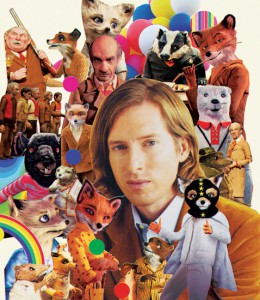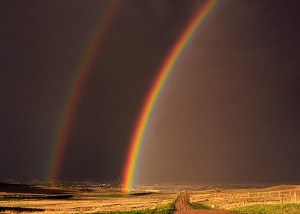 There was a time when I would fantasize about being forty years older than I am. The sixties just seemed more fun, more real, and more consequential than the early 2000s. But that feeling that everything important might have already happened, so tied to late-20th century declarations about ‘the end of history,’ etc. now seems ridiculous. Even if seven years ago everyone my age didn’t wish, as I did, that they could just become Joan Baez, I don’t think I’m alone now in feeling that the present moment is pretty much as important as any other particular time.
There was a time when I would fantasize about being forty years older than I am. The sixties just seemed more fun, more real, and more consequential than the early 2000s. But that feeling that everything important might have already happened, so tied to late-20th century declarations about ‘the end of history,’ etc. now seems ridiculous. Even if seven years ago everyone my age didn’t wish, as I did, that they could just become Joan Baez, I don’t think I’m alone now in feeling that the present moment is pretty much as important as any other particular time.
So if now is important, what is actually happening now? Last week I visited a symposium in Egypt’s breezy second city, organized by the Alexandria Contemporary Arts Forum, which set for itself a vast and impossible question: “The times are changing, what will art do about it?”
The invited guests did not really address this proposition, but instead presented their own philosophies of the present moment. One speaker, Timotheus Vermeulen, discussed what he and fellow Dutch cultural philosopher Robin Van den Akker term “Metamodernism,” a new framework for articulating commonalities in contemporary cultural. Metamodernism takes a step past postmodern disaffection to seek out examples of oscillation (the ‘meta’ in metamodernism) between irony and sincerity, and the infusion of a tentative, somewhat self-conscious hopefulness into art.
Discussing a recent art exhibition on Metamodernism in the Berlin Art Journal, Vermeulen explained, “What happens with these artists is that for a moment, they put on this sort of sincerity or earnestness, and it’s just suspending irony. They know it’s there, but for a moment they say ‘I love you,’ or for a moment they will say ‘this is real.’”
On their blog, “Notes on Metamodernism,” various examples of this heartfelt oscillation are picked out and analyzed. But there is a sense that Vermeulen, Van den Akker, and their contributors are trolling through culture, looking for examples that fit into their framework — however loosely defined that framework may be. There are, understandably, certain producers that have been picked out to exemplify metamodernist art: the sweet, strange music of CocoRosie and Antony and the Johnsons; the warm and quirky films of Michel Gondry and Wes Anderson; and the grandiose writings of Jonathan Franzen and David Foster Wallace.
The metamodernist project makes a brave and valiant effort at offering structure to a vast and fractured culture, but ultimately its scope feels limited. Speaking personally, the particular collection of references identified as a part of metamodernism feel not just very specific to my own demographic, but specific to a particular moment in my own culture-consuming life — a moment that is past. Is Freak Folk really a driving force in contemporary popular music? Is Wes Anderson setting the tone for film production?
 But just as I was ready to scrap metamodernism completely, I thought of the very TV show that everyone seems to be talking about (and which, as many many people have discussed, is still very specific to my own demographic). In last week’s episode of Girls, Hannah tells her kind-of-boyfriend Adam as she attempts to break up with him that, although she is not the kind of girl who needs to have brunch, she just wants someone who “wants to hang out all the time, thinks I’m the best person in the world, and wants to have sex with only me.”
But just as I was ready to scrap metamodernism completely, I thought of the very TV show that everyone seems to be talking about (and which, as many many people have discussed, is still very specific to my own demographic). In last week’s episode of Girls, Hannah tells her kind-of-boyfriend Adam as she attempts to break up with him that, although she is not the kind of girl who needs to have brunch, she just wants someone who “wants to hang out all the time, thinks I’m the best person in the world, and wants to have sex with only me.”
Maybe this straddling of conflicting desires is an example of the kind of oscillation metamodernism seeks to identify. And maybe this is, in fact, our contemporary condition: to want exactly what everyone has always wanted and at the same time to undercut the validity of wanting that thing.
In any case, identifying a post-postmodernism-modernism may be as impossible as figuring out what
art will ‘do’ about the changing times. But even if his project is doomed to failure, Vermeulen has a point when he says, “…many people think, ‘Ah well, what arrogant pricks who think that they can come up with something else,’ but I think it’s necessary that we all do this, that we try to make these enormous gestures again.”
This post may contain affiliate links.








